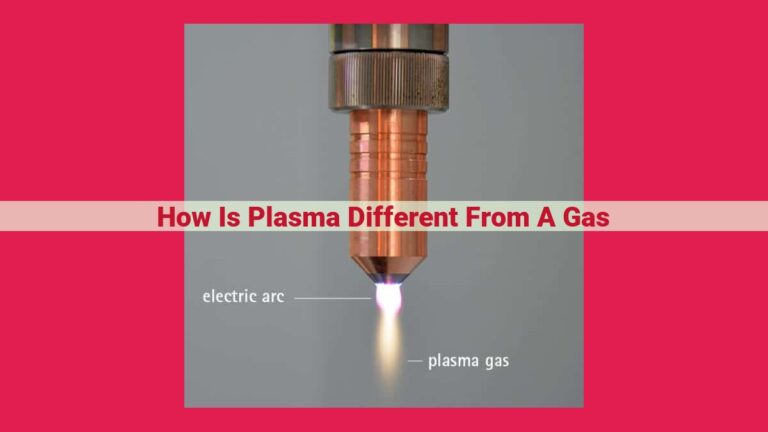Understanding Polyprotic Acids: Dissociation, Ph, Titration, And Applications

Hydrogens are removed from polyprotic acids through a stepwise dissociation process involving the release of protons (H+ ions). The extent of dissociation depends on the acid dissociation constant (Ka), which measures the acid’s strength. pH and pKa values determine the ionization state of the acid. Titration can be used to determine acid concentrations by neutralizing them with a known base. Strong acids dissociate completely, while weak acids only partially dissociate, with the extent of dissociation influenced by Ka. Understanding the behavior of polyprotic acids is crucial in chemical reactions and applications involving protonation and deprotonation.
Understanding Polyprotic Acids: A Journey into the World of Multiple Hydrogen Removals
In the realm of chemistry, acids hold a prominent position, and among them, polyprotic acids stand out for their unique ability to release multiple hydrogen ions (H+) when dissolved in water. These acids are like versatile performers in a chemical symphony, capable of undergoing protonation (gaining H+) and deprotonation (releasing H+), a dance that underpins their fascinating chemical behavior.
Picture this: A polyprotic acid, like a well-trained chemist, has a arsenal of ionizable hydrogen atoms. Each of these hydrogen atoms, like eager students, can be coaxed away from their parent acid, embarking on an independent journey as free H+ ions. The more hydrogen atoms an acid can release, the more protons it can donate, earning it the title of a strong acid.
The Strength of an Acid: Meet Ka, the Numerical Gauge
Acids aren’t all created equal. Some are like shy performers, reluctant to release their protons, while others are like extroverts, eager to share their hydrogen bounty. Ka, the acid dissociation constant, steps up as the numerical measure that quantifies an acid’s strength. The higher the Ka, the stronger the acid, and the more readily it gives up its protons.
pH and pKa: The Dance of Acidity and Alkalinity
In the world of acids and bases, pH and pKa are like the yin and yang, two sides of the same coin. pH measures the acidity or alkalinity of a solution, while pKa measures the strength of an acid. The relationship between these two values is like a delicate dance, where the higher the pH, the lower the acidity and the higher the pKa, indicating weaker acid strength.
Titration: Unveiling Acid Concentrations, Step by Step
To truly understand the behavior of polyprotic acids, we need to get our hands on some titrations. Titrations are like scientific detectives, carefully adding a known base to an acid solution until they reach the equivalence point, the moment of perfect neutralization. By tracking the volume of base added, chemists can deduce the concentration of the unknown acid, unlocking its hidden secrets.
Strong vs. Weak Acids: A Tale of Dissociation Differences
Strong acids are like the rock stars of the acid world, completely dissociating in water, releasing all their protons with gusto. On the other hand, weak acids are like shy debutants, only partially dissociating, holding onto some of their protons like precious jewels. Ka plays a pivotal role here too: the higher the Ka, the greater the extent of dissociation, allowing more protons to break free and roam the solution.
Polyprotic acids, with their ability to donate multiple hydrogen ions, are like the maestros of chemical reactions. Their protonation and deprotonation dance gives them a unique role in acid-base equilibria, affecting pH, influencing titration outcomes, and shaping the chemical landscape. Understanding polyprotic acids is like unlocking a musical score, giving us a deeper appreciation for the intricate harmonies that govern chemical behavior.
Acid Dissociation Constant (Ka): A Measure of Acid Strength
Acids play a crucial role in our daily lives, from the batteries that power our devices to the digestion of food in our bodies. Among the various types of acids, polyprotic acids stand out with their ability to donate multiple protons (H+ ions). To understand the behavior of these acids, we introduce the concept of the acid dissociation constant (Ka).
Ka, a numerical value, serves as a quantitative measure of an acid’s strength. It represents the equilibrium constant for the dissociation of an acid in water, indicating the tendency of the acid to release protons. The lower the Ka value, the stronger the acid. This relationship arises because a lower Ka value implies a greater extent of dissociation, meaning the acid releases protons more readily.
The strength of an acid is directly influenced by its chemical structure. Acids with weaker bonds between the proton and the rest of the molecule exhibit higher Ka values, indicating a lower tendency to dissociate. Conversely, acids with stronger bonds possess lower Ka values, reflecting a greater propensity to release protons.
For example, hydrochloric acid (HCl) has a very low Ka value, indicating that it is a strong acid. This means that it dissociates almost completely in water, releasing protons and forming chloride ions (Cl-). On the other hand, acetic acid (CH3COOH) has a higher Ka value, signifying that it is a weak acid. It dissociates to a lesser extent, releasing fewer protons and forming acetate ions (CH3COO-).
Understanding the acid dissociation constant is essential for predicting the behavior of acids in chemical reactions and various applications. By determining the Ka value, chemists can assess the strength of an acid, its extent of dissociation, and its suitability for specific chemical processes.
The Role of pH and pKa: Determining Acidity and Alkalinity
Understanding the behavior of polyprotic acids requires delving into the concepts of pH and pKa. pH (potential of hydrogen) measures the acidity or alkalinity of a solution on a scale from 0 to 14. A pKa (acid dissociation constant) is a numerical value that indicates the strength of an acid.
The relationship between pH and pKa is inversely proportional. This means that as the pH of a solution increases (becomes more alkaline), the pKa of the acid decreases. Consequently, a strong acid has a low pKa, indicating that it ionizes easily and releases protons readily. Conversely, a weak acid has a high pKa, indicating that it ionizes only to a small extent, releasing protons sparingly.
For polyprotic acids, which can release multiple protons stepwise, the pKa values of successive dissociations typically differ. The first pKa (pKa1) represents the ease of removing the first proton, while pKa2 and subsequent pKa values indicate the ease of removing subsequent protons.
By understanding the pH and pKa of a polyprotic acid, we can determine its ionization state under specific conditions. At a pH below the first pKa, the acid is predominantly in its protonated form, with a low degree of ionization. As the pH rises above the first pKa, the acid begins to ionize, releasing its first proton. At a pH equal to the first pKa, the acid is half-ionized, meaning that half of the molecules are protonated and half are ionized.
As the pH rises further, the acid continues to ionize, releasing additional protons until it reaches its final ionization state. This is typically observed at a pH much higher than the last pKa, where the acid is fully ionized and exists primarily as its conjugate base.
Comprehending the role of pH and pKa in determining the ionization state of polyprotic acids is crucial for predicting their behavior in chemical reactions. This knowledge aids in designing experiments, analyzing data, and manipulating acid-base equilibria to achieve desired outcomes.
Titration: Unraveling the Secrets of Acid Concentrations
In the realm of chemistry, understanding the concentration of acids is crucial for a myriad of reactions and applications. Enter titration, a technique that lifts the veil on this enigmatic property.
A Journey into Titration’s Embrace
Titration is an elegant dance between two solutions: an unknown acid solution and a standardized base solution. Like a skilled detective, the base solution gradually reveals the identity of the acid, unraveling its concentration with each drop.
The key to titration lies in the equivalence point, a pivotal moment when the acid and base have neutralized each other, creating a solution that’s neither acidic nor basic. Like balancing scales, this equilibrium ensures that the number of hydrogen ions donated by the acid is precisely matched by the hydroxide ions released by the base.
Neutralization: The Dance of Ions
Neutralization is the grand finale of titration, where the acid and base surrender their opposing charges to form a neutral solution. Hydrogen ions, the acidic culprits, eagerly embrace hydroxide ions, the basic counterparts, leading to the formation of water, the epitome of neutrality.
Titration’s Significance: A Window into Acidic Truths
Titration illuminates the unknown, revealing the concentration of acids with precision. It empowers chemists to decipher the strength of acids, tailor solutions for specific reactions, and unravel the intricacies of chemical reactions.
So, the next time you encounter an acid of unknown concentration, remember titration, the master detective that unravels its secrets with each drop.
Strong Acids vs. Weak Acids: Unraveling the Dissociation Differences
In the realm of chemistry, acids play a pivotal role. They are substances that donate protons (H+ ions) to other molecules. Among acids, polyprotic acids stand out for their ability to release multiple protons. To grasp the nuances of these acids, it’s crucial to understand the distinction between strong acids and weak acids.
Strong acids, such as hydrochloric acid (HCl) and sulfuric acid (H2SO4), are characterized by their tendency to completely dissociate in water. This means they release all of their protons, resulting in a high concentration of H+ ions. As a consequence, strong acids exhibit a low pH level, indicating a highly acidic environment.
Unlike strong acids, weak acids only partially dissociate in water. Acetic acid (CH3COOH) and carbonic acid (H2CO3) are examples of weak acids. These acids release only a small fraction of their protons, leading to a lower concentration of H+ ions and a higher pH level.
The extent of dissociation for weak acids is influenced by a parameter called the acid dissociation constant (Ka). Ka is a numerical value that represents the strength of an acid. A higher Ka value indicates a stronger acid that dissociates more readily, while a lower Ka value indicates a weaker acid that dissociates less readily.
In summary, strong acids completely dissociate in water, releasing all of their protons and resulting in a low pH. Weak acids, on the other hand, only partially dissociate, releasing a smaller fraction of their protons and leading to a higher pH. The acid dissociation constant (Ka) serves as a measure of an acid’s strength, with a higher Ka value indicating a stronger acid.





